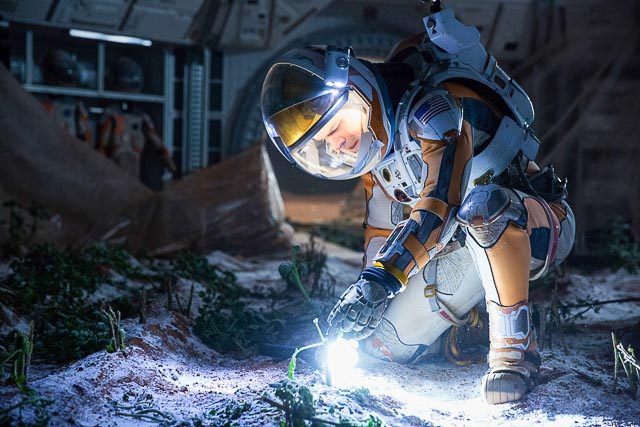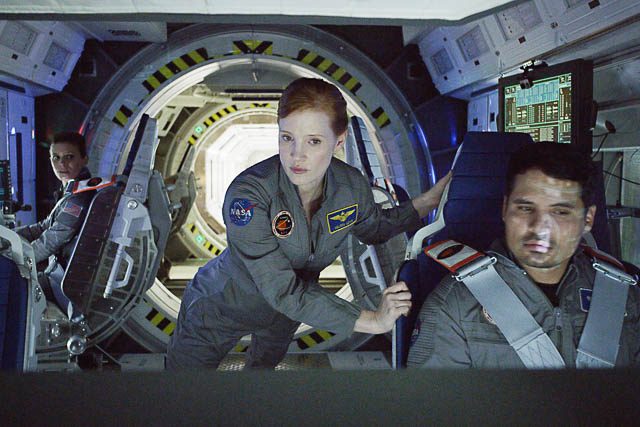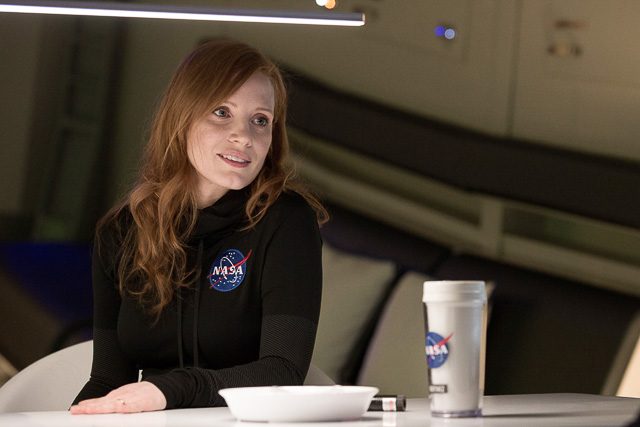SUMMARY
This is AI generated summarization, which may have errors. For context, always refer to the full article.

Elementary school science has taught us that in between Mars and our Earth is a whole lot of nothing, a vast and dangerous space of unpredictable danger. Ridley Scott’s The Martian opens with a picturesque shot of Mars. It ends with a similar shot of Earth. In between the two frames however is a whole lot of drama, an extravagant display of various emotions that converge to portray humanity at its best.
The Martian is all about spaces, and not much about the outer space that gives the film its sci-fi vibe. After the introduction that hastily turns botanist-astronaut Mark Watley (Matt Damon) from expedition jokester to extreme survivor, the film immediately shifts attention to the various distances that separate its characters, and how such distances are rendered insignificant by human ingenuity, perseverance and dignity. (READ: Interview: Filmmaker Ridley Scott on directing ‘The Martian’)
The centerpiece

Of course, the centerpiece of The Martian is Mars and the earthling who got left behind on the lifeless planet, which got the entire Earth moving just to get him home.
Scott dutifully dishes out the spectacles that the film requires. Cinematographer Dariusz Wolski turns the deserts of Jordan into the strange uninhabited landscape that Damon’s Watley has to tame for the sake of survival. Scott then peppers the film with panoramic shots of the red planet, emphasizing how little Watley is amidst the scope of Mars, in deep contrast with the film’s earthbound scenes where each frame is populated with people.
Damon is required to play the part of the survivor with palpable earnestness. His responsibility is to depict Watley with the right balance of emotions, always retaining the personality that makes him a convincing character for the entire world to root for. Fortunately, Damon inhabits the role seamlessly.
He adds levity to the possibly miserable lot fate has dished him, and in turn, makes what could have been the film’s more challenging sequences because it relies solely on the chemistry of one actor with his inanimate surroundings, brimming with humor.
The other half

It is understandable that The Martian seems to advertise itself as a survival flick in the vein of Robert Zemeckis’ Cast Away (2000), where an amiable Tom Hanks befriends a volleyball to survive the loneliness of being stranded in a remote island. However, the similarities between the two films are only skin-deep, stopping at the level of both its main characters having to suffer through loneliness because of an unfortunate event.
The other half of Scott’s film belongs to what happens in Earth, which is a lot of humanity exhibiting its imperfections in the face of balancing moral duties and the contemporary concerns.
While Watley is busy growing potatoes to be able to last through the days until he gets rescued, characters like Teddy Sanders (Jeff Daniels), Mitch Henderson (Sean Bean), Annie Montrose (Kristen Wiig) and Vincent Kapoor (Chiwetel Ejiofor), all of whom serve NASA in various capacities, are struggling with deadlines, public perceptions, and differences in motives and priorities.
It is this side of the film that thankfully adds complexity to what could have been a hollow parade of a fictional man in a dire fictional scenario. Scott is clearly more interested in the connections that complete humanity rather than shallow survival.
Scott’s interest is to provide an expansive portrayal of humanity, with its need to communicate, its ability to solve problems by teaming up, its considerations in decision-making being affected by concerns that are beyond the self.
Optimistic film
Scott has always been a humanist, and The Martian only proves that his interest in pitting human complications with different dilemmas has not ceased. Sure, Scott seesaws, what with films like Alien (1979), Blade Runner (1982), Thelma & Louise (1991), The Gladiator (2000), Hannibal (2001), and Matchstick Men (2003) showing both human depravities and virtues.

In the hugely misunderstood The Counselor (2013), Scott depicts humans as base and despicable creatures, existing in structured communities but self-serving to the core. With films that examine the entire spectrum of humanity, Sott seems to insist that human beings are capable of both good and evil in equal capacities.
The Martian’s seemingly simple conflict of bringing a single human being back to Earth can only be addressed by the entire human race exchanging minds and resources.
In a way, The Martian is Scott’s most optimistic film because it depicts humanity, in the midst of very real political, social, and moral realities, in its most ideal. All of its characters do away with personal motives all for the sake of one man’s life. – Rappler.com
 Francis Joseph Cruz litigates for a living and writes about cinema for fun. The first Filipino movie he saw in the theaters was Carlo J. Caparas’ ‘Tirad Pass.’ Since then, he’s been on a mission to find better memories with Philippine cinema. Profile photo by Fatcat Studios
Francis Joseph Cruz litigates for a living and writes about cinema for fun. The first Filipino movie he saw in the theaters was Carlo J. Caparas’ ‘Tirad Pass.’ Since then, he’s been on a mission to find better memories with Philippine cinema. Profile photo by Fatcat Studios
Add a comment
How does this make you feel?
There are no comments yet. Add your comment to start the conversation.